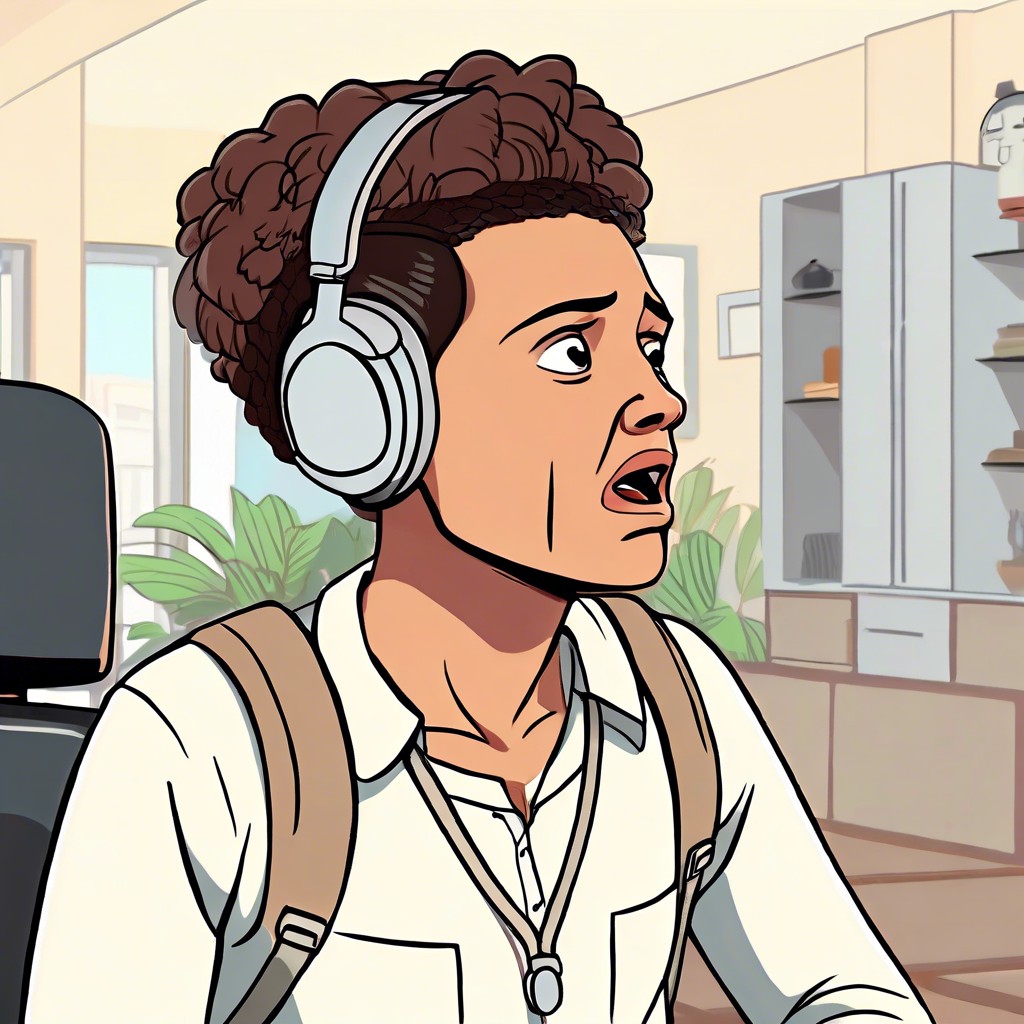Get helpful and unique ways to respond to “sorry” that are both genuine and creative.
Ah, the complex art of accepting an apology—should you play it cool with a simple “no problem,” or go deep with “I understand”? Whether you’re mending fences or just trying to avoid an awkward silence, knowing how to respond to “sorry” is a must. Dive in, and find the perfect response that suits every scenario; we’ve got it all covered from “no hard feelings” to “apology accepted“. Ready to level up your forgiveness game? Let’s roll!
Key takeaways:
- No Problem: Conveys forgiveness and eases tension.
- It’s Okay: Shows empathy, eases tension, and bridges understanding.
- Apology Accepted: Removes ambiguity, exhibits grace, and sets a positive tone.
- Don’t Worry About It: Signals empathy, shows maturity, and encourages normalcy.
- Let’s Move On: Promotes forgiveness, prioritizes peace, and showcases a positive mindset.
No Problem

It’s one of the friendliest ways to brush off an apology. This simple phrase plays it cool, signaling that the apology is accepted without making a big deal out of the issue. Here’s why people love it:
It conveys forgiveness: It tells the apologizer that their mistake isn’t a big concern for you.
Easiness vibes: It exudes an air of calm, indicating the situation is under control and not worth stressing over.
Low drama: Perfect for people who prefer to avoid making mountains out of molehills.
In essence, it’s a go-to phrase for those who like to keep things light and breezy. No harm, no foul, and no further discussion needed.
It’s Okay
Sometimes things go wrong, but that’s life. When someone says sorry, offering a simple acknowledgment helps smooth things over.
First, it shows empathy. You get it, mistakes happen, no one’s perfect. Secondly, it eases tension. A calm response can deflate potential awkwardness faster than a balloon meeting a porcupine.
Plus, it bridges understanding. It signals that you’re open to moving past the hiccup. This tiny phrase can pack a powerful punch in diffusing unease and fostering connection.
Lastly, it’s the ultimate shortcut. No lengthy explanations required, just a quick verbal Band-Aid.
Apology Accepted
Apology accepted is a simple, effective response. It acknowledges the apology and puts it to rest.
First, it removes any ambiguity. Both parties know the matter is resolved.
Second, it exhibits grace. By accepting, you show kindness and emotional maturity.
Third, it words a future-forward attitude. You’re focusing on moving past the mistake.
Fourth, it sets a positive tone. It’s not about the error but about making amends.
Accept the apology and bolster positivity.
Don’t Worry About It
It’s the universal balm for social faux pas: assuring the other person there’s no lasting damage. A phrase designed to diffuse tension faster than a comedian in a room full of toddlers.
First, it signals empathy. You’ve acknowledged their apology and moved quickly to reassure them. You’re basically saying, “Hey, life happens, and this isn’t a catastrophe.”
Second, it shows maturity. You’re choosing to rise above whatever mishap has occurred, setting a tone of emotional intelligence. Who knew being laid-back could make you look so wise?
Third, it opens the door for normalcy to return. By not making a mountain out of a molehill, you’re inviting the other party to move forward without lingering awkwardness. It’s like hitting the reset button on human interaction.
It’s also a bit of a social lubricant. Less awkwardness, more good vibes. It’s shorthand for, “Let’s get back to the good times, shall we?”
Let’s Move On
Sometimes, it’s best to leave the past where it belongs: behind us. Highlighting this approach can show maturity and emotional intelligence.
Emphasizing forgiveness can help mend relationships quickly. A simple gesture can sometimes solve complex problems. It allows both parties to breathe easier and focus on the present and future rather than dwelling on past mistakes.
It also signals that you’re prioritizing peace over prolonged tension. Life’s too short to hold grudges. Plus, who has the energy for that?
Moving forward showcases a positive mindset. You create an environment where people feel safe admitting mistakes without fear of eternal judgment.
It might not always be easy, but it’s definitely the high road. And hey, the view’s always better from up there.
I Understand
When someone apologizes and you say, “I understand,” you’re acknowledging the apology while showing empathy. This response conveys several key messages:
First, it’s a way of saying, “I hear you.” This helps the apologizer feel validated in their effort to make amends. Everybody loves a little validation, right?
Second, it shows you recognize the situation and the emotions behind it. You’re not just brushing them off; you’re offering a bridge of empathy and understanding.
Lastly, it can defuse tension. By understanding, you’re saying that the mistake or offense isn’t a dealbreaker, which can make mending the relationship easier.
It’s like waving a magic wand over a tiny mess, turning it into a learning opportunity for both.
Thanks for Apologizing
It’s crucial to acknowledge when someone owns up to their mistake. By expressing appreciation for their apology, you give value to their effort. It shows maturity.
- Encourages honesty: Recognizing apologies promotes an environment where people feel safe to admit faults.
- Builds trust: It strengthens bonds, as it shows mutual respect.
- Keeps the peace: It lightens the mood and helps move past awkward tensions.
- Boosts self-worth: The one apologizing feels heard and respected, fostering their sense of responsibility.
Remember, a simple thank you can go a long way.
We’re Cool
Nothing says “bygones” like a hearty “We’re cool.” It’s like giving someone a high-five while wearing shades.
Firstly, it reassures the other person that their apology has landed safely without causing turbulence. No lengthy explanations required. It’s the verbal equivalent of peaceful nod between two friends.
It suggests that the relationship is unchanged. No grudges, no lingering suspicion. Just smooth sailing from here on out.
Lastly, it imparts a sense of closure. Like turning a page in a book you really want to finish. There’s no need to dwell or dissect; the misunderstanding floats away, much like a leaf in the wind.
All Good
When you acknowledge an apology by saying “all good,” it’s like giving a brief, sunny thumbs-up. It’s a casual way of brushing off any lingering bad vibes and moving forward. Short and sweet, here are some reasons this works so well:
- It instantly lightens the mood. No need for heavy words when you can keep it breezy.
- You signal that the incident isn’t significant enough to dwell on. Let’s leave pet peeves to the pets.
- It shows maturity. You’ve taken the high road without building monuments to grudges.
Remember, sometimes a simple phrase is all you need to put things back on track.
No Hard Feelings
This phrase is perfect for defusing tension. It’s like saying, “Hey, we’re still friends; let’s not make this a bigger deal than it needs to be.” Use it when you genuinely mean it, not just to plaster over your resentment like a chameleon in a paint factory.
By saying it, you’re showing maturity and a willingness to move past the mistake. You communicate that the relationship is more important than the mishap itself. Plus, it’s basically the verbal equivalent of a high-five. Who doesn’t love a good high-five?
Be sincere. Insincerity can turn a peace offering into a ticking time bomb. Keep it real to keep it meaningful.




